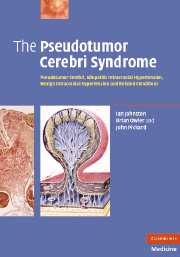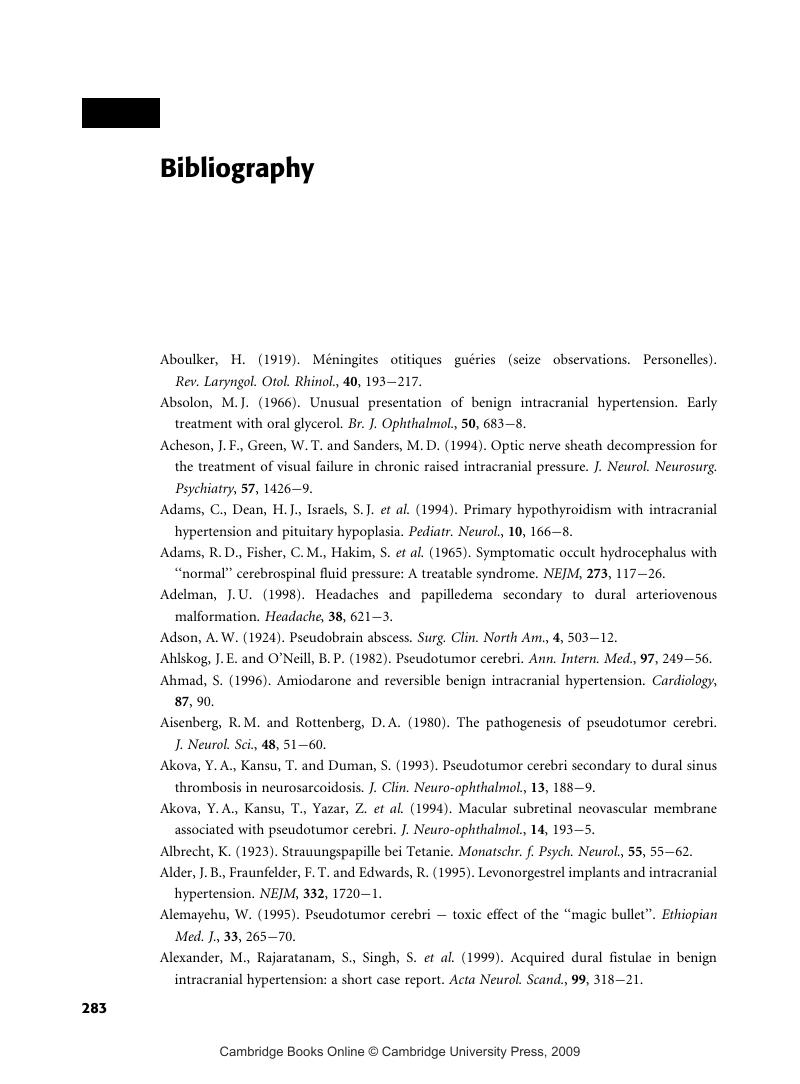 The Pseudotumor Cerebri Syndrome
The Pseudotumor Cerebri Syndrome Book contents
- Frontmatter
- Contents
- Preface
- 1 Introduction
- 2 History of the pseudotumor cerebri concept
- 3 Disease mechanism
- 4 Nosology, nomenclature, and classification
- 5 Aetiology
- 6 Clinical features
- 7 Clinical investigations
- 8 Treatment
- 9 Outcome
- 10 Experimental studies
- 11 Conclusions
- Bibliography
- Index
- Plate section
- References
Bibliography
Published online by Cambridge University Press: 21 August 2009
- Frontmatter
- Contents
- Preface
- 1 Introduction
- 2 History of the pseudotumor cerebri concept
- 3 Disease mechanism
- 4 Nosology, nomenclature, and classification
- 5 Aetiology
- 6 Clinical features
- 7 Clinical investigations
- 8 Treatment
- 9 Outcome
- 10 Experimental studies
- 11 Conclusions
- Bibliography
- Index
- Plate section
- References
Summary

- Type
- Chapter
- Information
- The Pseudotumor Cerebri SyndromePseudotumor Cerebri, Idiopathic Intracranial Hypertension, Benign Intracranial Hypertension and Related Conditions, pp. 283 - 350Publisher: Cambridge University PressPrint publication year: 2007


